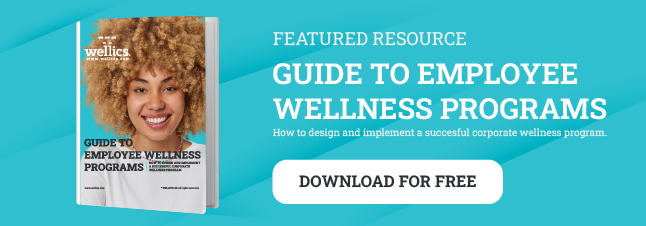Before implementing an employee wellness program, it’s critical to know how you’ll measure the return on investment (ROI). Organizations commonly use healthcare costs, productivity, or sick days as ways to measure ROI. But with so many direct and indirect benefits of employee wellness, it can be complicated to measure an accurate return.
This guide to how to calculate ROI on wellness programs covers the different approaches to measuring wellness program results. We also offer tips to maximize ROI and ensure your investment in employee wellness programs is worth it.
How to Measure ROI on Wellness Programs
The ROI earned from employee wellness programs depends on the types of outcomes your team is measuring. Each organization has its own reasons for implementing a wellness program, meaning different teams will track unique metrics, including financial gains.
For example, publicly-traded organizations that invest in employee wellness see better stock performance on the S&P 500 Index compared to the average company.
Whether your goal is to maximize profits, reduce healthcare spending, or generally help employees achieve better health, the same principle for calculating ROI applies.
To calculate ROI, ask: For every dollar spent on employee wellness, how much money was saved or earned after the program was implemented?
You may not always be able to put a monetary figure on the results achieved. Instead, you may take an approach called value on investment (VOI), where you measure whether a non-financial metric increased after the program was implemented.
Do employee wellness programs work? Below are six different ways to measure employee wellness program ROI or VOI.
1. Productivity
When people take charge of their health by increasing activity levels, making healthier nutritional choices, or managing their stress, they often become higher performers at work.
To determine whether a wellness program has made employees more productive, you need to have a way to measure productivity. Compare your pre-program productivity levels to your results after the program was implemented to determine whether employee wellness has affected productive performance.
2. Engagement
Companies that implement wellness programs may see an improvement in employee engagement. Engaged employees feel valued by their team and aligned with their organization's vision.
Supporting employees in improving their health and well-being can directly affect how engaged they feel by:
- Developing a more positive view of the organization
- Feeling increased levels of job satisfaction
- Reducing levels of absenteeism or presenteeism
With the use of surveys, feedback interviews, and other measurement approaches, organizations can determine whether wellness programs have had an effect on overall engagement.
3. Healthcare Spending
One of the most tangible ways to measure ROI on health and wellness programs is to calculate before-and-after healthcare spending.
Effective wellness programs target certain risk factors, such as obesity and high blood pressure. Since chronic diseases account for the largest healthcare expenditures, reductions in these risk factors can drastically decrease the amount of financial resources companies invest in healthcare.
So are wellness programs worth it? Executives at Johnson & Johnson claim that employee wellness programs have yielded their organization an ROI of 2.71:1 — for every dollar spent, the company saved $2.71 on healthcare costs. If workplace wellness programs are effective at helping employees improve their health, then an organization’s healthcare spending should decrease after program implementation.
4. Employee Turnover and Retention
Lower employee turnover and higher retention rates may end up being a byproduct of an effective wellness program. When employees make positive changes to their personal health, they become more productive and engaged, resulting in greater job satisfaction.
One of the leading factors in employee turnover is poor mental well-being. According to the American Psychological Association, burned-out employees are over 2.5 times more likely to leave their jobs. Employers that can offer wellness programs that support mental health, stress management, and better well-being may consequently see higher retention rates.
5. Talent Acquisition
Growing businesses are always on the lookout for new talent to strengthen their team. Having attractive perks and a positive culture are becoming more important to job seekers than compensation alone.
Wellness programs, especially those that can be tailored to meet personal health goals, may help increase an organization's ability to attract and retain talent. Robust wellness programs give organizations a competitive edge in the job market, allowing them to earn a return on investment through better talent recruitment strategies.
6. Health Metrics
Effective employee wellness programs should improve the health and well-being of participants. Having your employees keep track of key health metrics can help managers gain insight into whether the wellness interventions are working.
Some of the key health metrics your employees may record include:
- Weight loss
- Blood pressure
- Amount of physical activity
- Smoking and drinking habits
- Sleep quality
Improvement in any of these areas indicates that the employee wellness program is yielding a value on investment.
3 Tips for Increasing ROI on Corporate Wellness Programs
No matter how your organization measures ROI or VOI, there are certain ways to implement a wellness program to ensure its effectiveness.
Below are some tips on how to yield a higher ROI on wellness programs:
1. Maximize participation: Aim to have at least 50% of your staff enrolled and participating. The more employees you have enrolled, the lower the average cost of operating the program and the more tangible results it will produce for your employees.
2. Tailor incentives to demographics: When designing your wellness program, consider the incentive or reward structure that will optimize buy-in and participation in the program. When employees are highly motivated by the specific types of incentives or rewards, it increases their chances of getting the results they set out to achieve.
3. Increase ease of access: Make it easy for your employees to learn about the wellness program, register for it, and participate. Have systems in place to disseminate information and promote it as part of your organizational culture. Appoint a dedicated Wellness Captain who can serve as an advisor, helping employees drive results and maximize their experience with the program.
Implementing an Effective Employee Wellness Program
Earning an ROI on workplace wellness programs is possible. Consider that even an ROI ratio of 1:1 — breaking even — is still positive if the program genuinely helped employees improve their health.
Since changing health habits takes time, it could be months or years before an organization is able to calculate the full ROI on a wellness program. Ensure program success by leveraging a wellness platform that provides data-driven results that can help you maximize return on investment for wellness programs.
Wellics has designed a wellness platform that gives organizations more control over their investment. Use our platform to set custom metrics and measure ROI how you want. Whether ROI means better employee engagement, productivity, well-beign, or retention, you can use the power of the Wellics platform to maximize your investment in employee wellness. Learn more about the Wellics employee wellness platform today.
Originally published May 18, 2022 - 8:52 AM, updated September 3, 2024
Sources
- https://journals.lww.com/joem/Fulltext/2016/01000/The_Stock_Performance_of_C__Everett_Koop_Award.3.aspx
- https://hbr.org/2010/12/whats-the-hard-return-on-employee-wellness-programs
- https://www.apa.org/news/press/releases/stress/2014/stress-report.pdf









